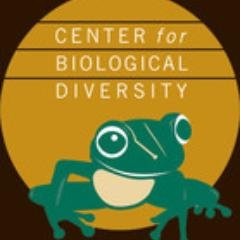Plastic Pollution at Four Coastal California Hotspots Violates Clean Water Act
Water Board Urged to Protect San Francisco Bay, San Diego, North Coast, Channel Islands
OAKLAND, Calif. – (RealEstateRama) — San Francisco Bay and at least three other California coastlines suffer severe plastic pollution that violates the federal Clean Water Act, according to an appeal the Center for Biological Diversity has filed with the California State Water Resources Control Board.

A Center review of scientific studies found that the Bay and its surrounding coastline and the waters off San Diego, the North Coast and Channel Islands National Park should be declared impaired by the water board. That designation would require state officials to clean up plastic pollution sources.
“Californians are literally swimming in plastic,” said Blake Kopcho, who conducted the survey for the Center. “This pollution is disturbingly widespread, from microfibers in the San Diego surf to water bottles on Eureka’s Clam Beach. State water officials need to acknowledge the problem and clean up the plastic that’s fouling our coastline and infecting marine life.”
From San Diego to Crescent City, California’s coastline is inundated with thousands of pounds of plastic trash. While plastic water bottles, Styrofoam food packaging, and other products are the most visible problem, most of the pollution consists of tiny bits of plastic from synthetic clothing and beauty products. Those microplastics can absorb environmental toxins and get eaten by fish and other marine life and can eventually be consumed by humans.
The Center’s scientific review found the following:
- San Francisco Bay: Bay waters are polluted with microplastics at concentrations greater than those of other urban water bodies studied in the United States, including the Great Lakes and the Chesapeake Bay. Scientists found up to 2 million microplastics per square kilometer in its surface waters, much of it synthetic microfibers from textiles. Eight wastewater treatment facilities on the bay discharge an estimated 56 million microplastic particles per day, primarily in the form of microfibers.
- North Coast: Multiple beaches from Point Reyes to the Oregon border, including those in Eureka and Fort Bragg, are covered in hundreds of pounds of trash every year, much of it plastic beverage bottles, caps and food packaging. Volunteers collected an average of 415 pounds of trash annually at North Jetty Beach in Humboldt County from 2010 to 2015. The North Coast is one of the first regions that the water board will evaluate when determining if water bodies in California will be listed as impaired.
- San Diego: Researchers found dangerous levels of microplastics in waters off Sunset Cliffs, at levels similar to those in the San Francisco Bay (14 microplastics per liter). Scientists have demonstrated that microplastics at concentrations of 10 per liter can harm marine organisms, including fish. This suggests marine life in San Diego is likely endangered by microplastic pollution.
- Channel Islands National Park: While the plastic pollution in these seemingly pristine waters isn’t nearly as bad as San Diego or the Bay Area, the Clean Water Act sets different standards for areas of special biological significance. They must be preserved to protect their unusual variety of aquatic life. The presence of microplastics in ocean waters around the Channel Islands raises concerns that microplastics are migrating far from urban areas and polluting the most remote waters of California.
State and regional water-quality guidelines protect marine wildlife and their habitat from pollution, and prohibit trash from interfering with the enjoyment of beaches. The water board will evaluate the Center’s appeal for water-quality violations and develop a list of impaired waters. It is required to send that list to the U.S. Environmental Protection Agency, which ultimately determines what water bodies are listed as impaired.
Contact: Blake Kopcho, (805) 708-3435,
Source: Center for Biological Diversity














